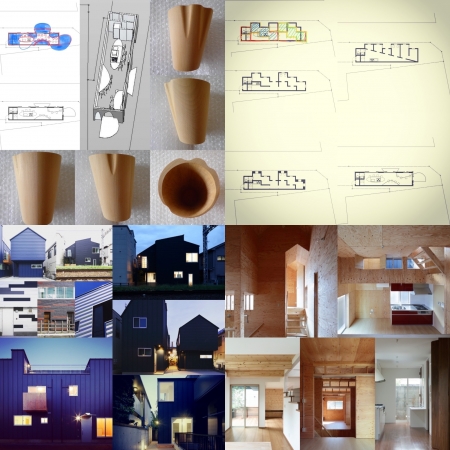動的と静的の濃度が違い
人と建築の関係性からなる部分を動的として、建築の素の部分、それは骨組みであったり、人の影響を受けない部分で静的として、動的と静的が両方同時に成り立ち、補完し合う状態をつくる。
ただ、それは動的と静的に分けると全く水と油のように混ざり合うことが無く、はっきりと分離するのではなくて、イメージとしては小さい動的と静的な微粒子が同時に存在していて、場所によって微粒子の割合が違うような、濃度が違うような状態であり、その濃度の違いで建築の見え方が決まる。
動的と静的に分けるとスケルトン・インフィルのような状態を想像してしまうが、濃度の違いと考えれば、また違った展開も現れてきそうな気がした。
"Difference between dynamic and static concentration"
Dynamic and static are both established and complemented at the same time, with the part consisting of the relationship between people and architecture as dynamic, and the basic part of architecture, which is the skeleton or the part that is not influenced by people, as static. Create a fit.
However, when it is divided into dynamic and static, it does not mix like water and oil at all, and it does not separate clearly, but as an image, small dynamic and static fine particles exist at the same time. , The ratio of fine particles differs depending on the location, and the concentration is different, and the appearance of the building is determined by the difference in the concentration.
If you divide it into dynamic and static, you can imagine a state like a skeleton infill, but considering the difference in concentration, I felt that a different development would appear.


